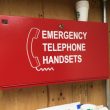A trip down memory lane
This year saw its fair share of technology controversies in the public-safety and industrial communications sectors. There were biggies, of course, such as how a national public-safety network might be created to give first responders access to broadband mobile data services. But I wanted to highlight the ones that particularly impassioned the readers of Tech Talk this year and sparked many insightful comments:
Digitalradios and the problems they sometimes present in high-noise environments such as the fireground. This year saw much discussion regarding the alleged inability of digital radios to distinguish voice from background noise. The issue has had a significant impact in the fire community, with some departments opting to stay with analog equipment for the moment. It will be an issue that will continue to play out in 2010 as entities conduct more tests to get their arms around the issue. Next year, the Public Safety Communications Research (PSCR) Program will conduct tests in late January through February.
The use of cell-phone jamming equipment in prisons. The debate began in January as prisons deal with these electronic forms of contraband. Prisoners smuggle in cell phones to use for a variety of nefarious activities, including intimidating witnesses and coordinating criminal activity. A bill allowing cell phone jamming is winding its way through Congress.
Meanwhile, the Cellular Telecommunications & Internet Association says there has to be a better way to stop rogue cell phones. It advocates to the use of devices that locate cell phones inside of correctional facilities without adverse effect on nearby communications systems. CTIA is working with partners to test the solution.
I suspect a number of new technologies will be rolled out in 2010 to provide a cell-phone jamming alternative. Just this week, Berkeley Varitronics Systems introduced a handheld, cell-phone detector called the Bloodhound, which is designed to enable security officers to scan in real-time for unauthorized cell-phone activity using a direction-finding antenna.
TETRA technology’s potential in the U.S. For the last decade or so, a question repeatedly has resurfaced in the U.S. market: Why can’t the European trunked radio standard TETRA be deployed on U.S. soil? And the finger always pointed to Motorola — the technology’s primary intellectual property rights holder — because of its alleged unwillingness to license that technology here.
So it was quite an interesting turn of events in June when it was learned that, with Motorola’s blessing, the Utilities Telecom Council’s technical division was forming a working group to identify the technical issues related to use of the technology in the U.S. for utilities, and to find a way to make the standard meet FCC equipment requirements. As they always say, the devil is in the details, but at least there is some progress being made in terms of the choice utilities want to have on the technology front.
Here’s to 2010 and the technology controversies it surely will bring. They always make my job much more interesting.
Editor’s note:Tech Talk will be taking a break until Jan. 6. Enjoy the holidays.
What do you think? Tell us in the comment box below.

















